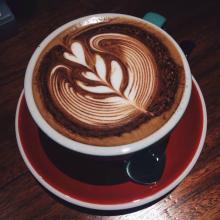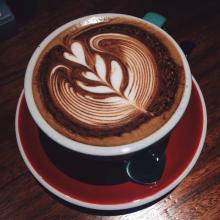The flavor and taste of Mexican coffee beans with the fullest grains. Introduction to the characteristics of fine coffee in manor area.
Water transport, especially sea transport, undertakes the task of transporting part of Rico's goods, domestic goods and outbound passengers. According to the statistics of the national port system, from January to December 2013, the national freight container load reached 288 million tons of cargo, an increase of 1.6% over the same period last year. Among them, the deadweight of oil and petroleum derivatives alone reached 122 million tons, accounting for 42.5 percent of the total freight; bulk mineral products were about 78.36 million, accounting for 27.2 percent; and agricultural products were 13.56 million tons, accounting for 4.7 percent. In addition, in 2013, Mexican coastal ports and international cruise ships received a total of 56710 ships, with a total of more than 9.96 million passengers. After the privatization reform in the 1990s, the port of Riccigo has been successfully modernized, and various facilities of the domestic terminals have become more advanced. There are regular or irregular passenger and cargo liners with many countries in Europe, the United States, Central and South America and the Caribbean, the far East, the Mediterranean and Scandinavia. There are 140seaports, 29 inland ports and 29 inner lake docks in Xilao. According to the Ministry of Communications and Transportation (SCT), there are 117maritime ports and docks in Mexico. Among them, there are 58 ports and docks along the Pacific coast, and 5 ports and docks in Mexico Bay and the Caribbean. [3]
Tourism editor
Mexico is one of the centers of ancient Indian culture. The world-famous Mayan culture, Toltec culture and Aztec culture were all created by Mexican Indians. Mexico lies in the southern part of the North American continent. It is bordered by the United States to the north, Guatemala and Belize to the southeast, the Gulf of Mexico and the Caribbean to the south, and the Pacific Ocean to the southwest. 5 of the land area are plateaus and mountains, with an average elevation of about 1800 meters. There are many islands along the coast. In the Pacific Ocean, there are the Leviaghihdo Islands, Guadalupe, Cedros and Tres-Marias Islands, Tibron and Angel-de Guada in the Gulf of California, and Murais and Kosummel in the Caribbean.
Mayan monuments
Mayan monuments in Mexico
Mayan monuments in Mexico
The site of the Qichen Icha Mayan city-state was once the largest and most prosperous city-state in the ancient Mayan empire. The site is located in the middle of Yucatan Peninsula. It was founded in 514 AD. The main monuments of the city-state are: Qianzhu Square, which once supported a huge dome-shaped roof. You can see the size of this building. The reclining stone statues of the two gods in front of the samurai temple. 9-story, 30-meter-high stepped Kukurkan pyramid. As well as the sacred well (limestone vertical cave) and the ancient Mayan astronomical observatory built in the shape of a snail on the platform, the selection of Mexican coffee, known as the "snail platform", is generally carried out manually. The main basis for selection is according to the fullness of coffee particles, whether it is uniform, and then grade it. Generally speaking, coffee with full and uniform grains is easier to preserve. Only the fullest and most evenly grained coffee beans can be roasted to represent the best and best coffee in the country.
After the workers picked the coffee beans, they spread the coffee beans in a special house with ventilation on all sides. About a week later, the coffee beans were packed in loosely packed bags so that the wind could blow through the bags. After about seven weeks, the coffee beans changed color and taste. Finally, these coffee beans are selected manually, and the coffee beans of high quality are selected and officially bagged for preservation.
Aldura coffee beans are the top coffee beans in Mexico. These coffee beans are large, with strong sweet, sour and good aroma. Non-alcoholic Mexican coffee is often paired with milk. Heat a cup of milk, a teaspoon of cinnamon powder and a teaspoon of vanilla powder in a pot at medium temperature, not too hot, and do not boil the milk. Then add the cocoa powder, fully dissolve and stir well. If you like chocolate, you can use chocolate paste instead of cocoa powder and milk. Let the milk dry for about 5 minutes, wait until the milk is slightly cool, then pour into the prepared coffee, decorate the coffee surface with cold cream, then decorate with a piece of cinnamon, and the Mexican coffee is ready. The aromas of chocolate and cinnamon blend together to give off the smell of desert. Tasting such a cup of coffee, you seem to be walking through the desert full of vicissitudes.

Important Notice :
前街咖啡 FrontStreet Coffee has moved to new addredd:
FrontStreet Coffee Address: 315,Donghua East Road,GuangZhou
Tel:020 38364473
- Prev

Dominica Santo Domingo Coffee Flavor and taste Manor with excellent acidity
Coffee in Dominica is grown in highlands and lowlands, and its taste is slightly different. The upland is sour, but the taste is rich; the lowland is less sour and tastes smoother. Boutique coffee has become popular in recent years. High-quality coffee beans produced by some Dominican estates have a rich aroma, mellow taste and moderately bright sour taste, and have been bought with the more famous Puerto Rico beans or teeth.
- Next

Introduction to the characteristics of the sour and sweet fragrant Panamanian Kasha coffee bean flavor and taste manor
The construction of the Panama Canal lasted 30 years from 1883 to 1914. At first, the French led the project, and then the development rights fell to the Americans, during which as many as 50,000 craftsmen and technicians were employed, many of whom were engineers from northern Europe. Toleff Bache Mnniche is one of them. The student who graduated from Dresden, Germany
Related
- Detailed explanation of Jadeite planting Land in Panamanian Jadeite Manor introduction to the grading system of Jadeite competitive bidding, Red bid, Green bid and Rose Summer
- Story of Coffee planting in Brenka region of Costa Rica Stonehenge Manor anaerobic heavy honey treatment of flavor mouth
- What's on the barrel of Blue Mountain Coffee beans?
- Can American coffee also pull flowers? How to use hot American style to pull out a good-looking pattern?
- Can you make a cold extract with coffee beans? What is the right proportion for cold-extracted coffee formula?
- Indonesian PWN Gold Mandrine Coffee Origin Features Flavor How to Chong? Mandolin coffee is American.
- A brief introduction to the flavor characteristics of Brazilian yellow bourbon coffee beans
- What is the effect of different water quality on the flavor of cold-extracted coffee? What kind of water is best for brewing coffee?
- Why do you think of Rose Summer whenever you mention Panamanian coffee?
- Introduction to the characteristics of authentic blue mountain coffee bean producing areas? What is the CIB Coffee Authority in Jamaica?

